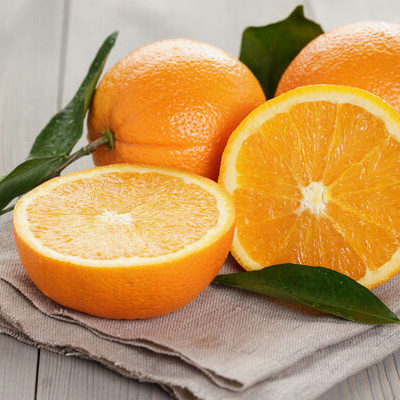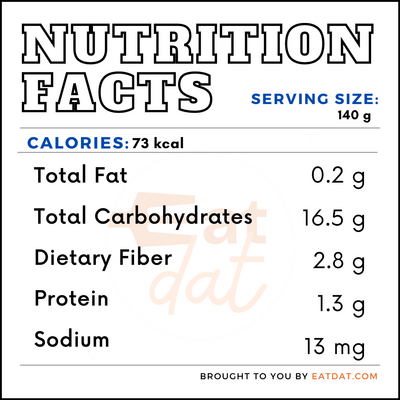
Orange
What is an Orange?
The orange (Citrus sinesis) is a type of citrus fruit belonging to the Rutaceae family. An orange’s interior is divided into several juicy and fleshy segments that are held together with thin skins. The fruit has a tough, shiny peel that bakers and chefs alike can use for zest to add flavor to food.
- The orange has more than 600 varieties growing all over the globe.
- It is one of the most popular citrus fruits in the world.
Ten common types of this citrus fruit are:
- Navel
- Blood
- Tangerine
- Acid-less
- Mandarin
- Seville
- Bergamot
- Clementine
- Trifoliata
- Cara Cara Navel
Origin of oranges
This fruit most likely originated between southern China, northeastern India, and southeastern Asia. This fruit reached the Mediterranean by either the influence of Portuguese navigators around 1500 or Italian traders around 1450. Before this fruit arrived, the Europeans used citrus fruits for medicinal purposes only. However, that was not the same case for the orange. Initially, wealthy people were the only ones who cultivated the fruit. By 1646, the fruit became well-known to the public.
The Spanish brought this fruit to South America in the mid-1500s, while the French transported it to Louisiana. Seeds of the fruit were moved from New Orleans to Florida in 1872. During this period, people established fruit groves by grafting sweet oranges with the sour type. The popularity of this fruit would eventually spread throughout the world. Today, this fruit has reached South Africa, Australia, the Mediterranean region, and the far east.
Function
This fruit has many functions in the kitchen, such as in salads, fruit punch, syrups, marmalade, and desserts. Juicing this fruit to obtain orange juice is also very popular. Additionally, cooks use candied orange peels in fruit cakes and other sweet treats. The peels of this fruit can even be infused to create herbal tea blends.
Nutrition
In navel orange (140g), there are:

This fruit has significant health benefits. Here are a few of them:
- The antioxidants in this fruit make it capable of fighting free radicals that cause cancer.
- It can help reduce blood pressure due to its low sodium content.
- The vitamin C in this fruit is good for skin health and appearance.
- This fruit may help reduce the risk of developing heart disease.
- This fruit can also be instrumental in fighting against diabetes.
If you have gastroesophageal reflux disease, consuming oranges may lead you to experience an increase in your symptoms. A common symptom of this condition is heartburn. Should you experience more digestive problems while consuming oranges, you should reduce or stop consumption.
Commercial production
This fruit grows well in tropical and subtropical regions up to an altitude of 4,900 feet. An annual rainfall amount of 40 to 80 inches is the best for this fruit. A soil temperature of 78.8°F is good for optimal yield. Also, the soil should have high fertility, light loam, and good drainage. The soil’s pH range should fall between 6.0 and 7.0. Generally, a dry climatic condition favors orange production.
Brazil was the largest producer of this fruit between 2019-2020, producing 15.62 million metric tons of it. The global production value of oranges between 2018-2019 was 53.84 million metric tons. This value was expected to drop to 46.06 million metric tons by 2020.
Application
It’s not recommendable to wash whole oranges before storing them, as moisture on the surface of the fruit can cause spoilage. Two ways to store this citrus fruit are keeping it in your refrigerator or at room temperature away from sunlight. The fruit can last for two weeks under these conditions. Sliced oranges can last for about four days in the refrigerator at a temperature of 40°F. If you keep this fruit in the freezer, it can last for up to a year.
Orange recipes
The fruit is used in many juices, cakes, and syrups. Here are five recipes to try:
- Citrus and Avocado Salad with Orange Water
- Roast Duck with Citrus and Carrots
- Orange Marmalade
- Orange Dream Bars
- Orange Cake
FDA regulation
The Food & Drug Administration classifies this fruit as a raw agricultural commodity. Therefore, it oversees the production, harvesting, and packing of oranges. The FDA has also allowed the use of oranges as a food additive to color meat.
References
“Most Popular Citrus Fruits in The World.” Taste Atlas, Taste Atlas, www.tasteatlas.com/most-popular-citrus-fruits-in-the-world.
Megan, Ware. “Oranges: Health Benefits, Nutrition, Diet, and Risks.” Medical News Today, MediLexicon International, 10 Dec. 2019, www.medicalnewstoday.com/articles/272782.
“CFR – Code of Federal Regulations Title 21.” accessdata.fda.gov, U.S Food & Drug Administration, 1 Apr. 2019, https://www.accessdata.fda.gov/scripts/cdrh/cfdocs/cfcfr/CFRSearch.cfm?fr=112.1&SearchTerm=orange
